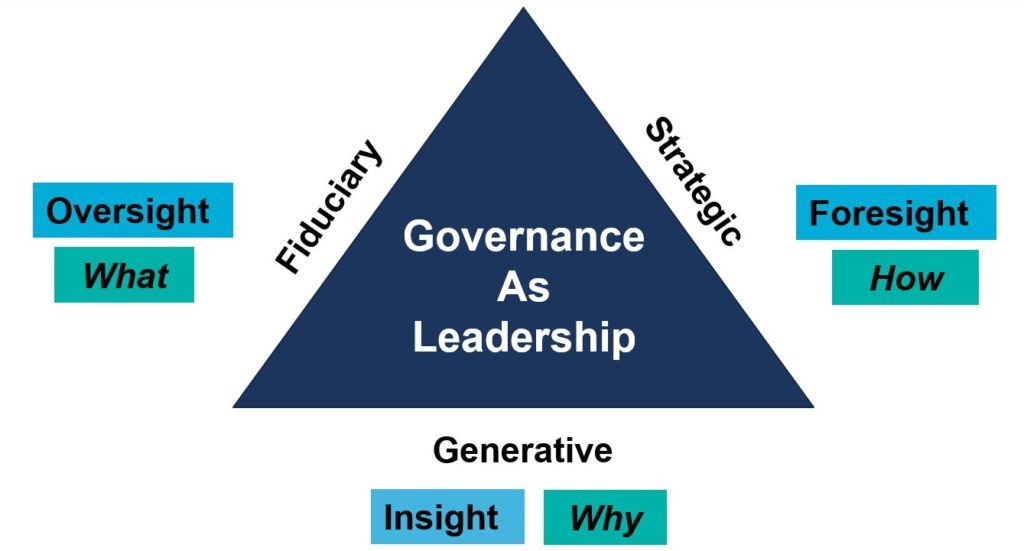Actions for Board Members in a Time of Crisis

There has been a good amount of guidance issued for nonprofit board members in the past couple of months. Rightly so; none of us has had to govern through a global pandemic before. We’re all learning and adapting together. To avoid repeating the great resources already out there – hopefully you have been reminded about the need to be frequently checking in with your executive director and are prioritizing the health of your people – I wanted to extract some specific actions for board members.
Most of these come from a great conversation I had last month at the 2020 Nonprofit Finance & Sustainability (Virtual) Conference with my colleague Kate Barr, President and CEO of Propel Nonprofits, as well as John Sullivan, Board Chair of the Minneapolis Foundation. For those of you not at the conference, here is a full list of the 10 Actions for Boards in a Time of Crisis that we covered. I want to repeat a frame that Kate provided, as I think it’s a good reminder: Boards still need to govern; you cannot go into a governing hiatus. However, every single thing about how your role as a board member is carried out will likely look different.
No matter the circumstances, nonprofit board members have five roles and responsibilities. The question is, what are the adaptations you will need to make or think about as you continue to govern now? Here are eight specific considerations:
The board chair should be the main point of communication with the executive director. As both a supporter of the executive director and a leader of the board, the board chair plays a key role now in channeling questions, resources, and offers to help from the rest of the board so the executive director doesn’t feel overwhelmed. Likewise, the chair should be communicating back to the board about program shifts and checking in with them periodically.
Resist the urge to offer quick solutions, even if these are driven by the desire to help. Instead, listen first and ask, “What do you need from the board?” Whether that’s serving as volunteers or spreading messages created by staff around shifting services, there will be plenty of ways to help. Let your nonprofit’s leaders prioritize what’s most needed.
Determine which mode of governance you need to focus on. This is another important role the board chair can play. We shared this great graphic from Governance as Leadership: Reframing the Work of Nonprofit Boards. While boards need to pay attention and perform all three of these functions, you cannot do all of them at once. The board chair should help inform which one you should focus on, and when.

Chances are, up until now your board has largely been focused on fiduciary decisions and oversight. Your financial reality has been shaping your big strategic decisions. Now, though, is also a time to be generative. If your organization is actively doing scenario planning, you should be asking questions of what you want to be as an organization now, in six months, in a year.
Get clear on how decisions will be made. Who from the board needs to be involved? How often are you checking in? Is there a modified process that allows decisions to be made faster? We know that board members themselves may be overwhelmed with their own crises, or that certain skillsets and personalities will be most needed. You may decide to identify a task force of board and staff members to think through financial plans, scenarios, and short-and long-term considerations.
Be open to adjusting how you’re meeting together. You may have shorter, more frequent meetings, and likely those will be virtual. As you meet and make decisions, be careful not to add extra action items to the plate of staff members. Also be mindful of how you can make your virtual meetings energizing rather than draining. Take more frequent and longer breaks. Perhaps for big decisions, ask people to turn off their cameras, close their eyes, and give the decision the consideration it needs without staring at a screen of faces.
Know that board of directors may take off their board member hats and step in as volunteers. If you find yourself needing to do this – for example, maybe staff members are being called to care for their own family or have been furloughed, or demand for your organization’s services have picked up (e.g., your nonprofit operates a food shelf) – be clear to communicate about the shift in roles and remain respectful of staff who are still working.
As Kate said, there’s never been a better time to stop saying “but we’ve always done it that way” than now. Take a hard look at your priorities, your processes, and your ways of operating together. Take notes on what you’re noticing to help inform how you can work together in the future. Maybe you like getting to see the multiple hats your fellow board members wear or opening your meetings with gratitude. Whatever you’re learning and appreciating in this time where everything is shifting, know you can bring it with you.
I’ll close with a common theme that came out of this conversation, and that is to give yourself and others grace. It goes without saying how difficult it is to plan and lead through uncertainty; we are all trying to do the best we can with what we can. We won’t have the answers right away and we will have to ask for help, but we are not alone and can’t go at this alone. Together, we will come out of this better, and that is the silver lining amidst this crisis.
Related Resources
Governing in a Time of Crisis: 10 Actions for Boards
During a crisis, what does a nonprofit board need to do? This resource lays out 10 key actions for board…
Board Roles & Responsibilities
Legal compliance and financial oversight are certainly on the list of board responsibilities, but they’re not enough for effective governance….

